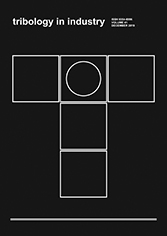Volume 43, No 2, 2021, Pages 189-199
Effect of Substrate Surface Roughness on the Tribological Properties of DLC-H Coatings on Tappet Valve
Authors:
F.O. Kolawole ![]()
![]() ,
S.K. Kolawole
,
S.K. Kolawole ![]() ,
L.B. Varela
,
L.B. Varela ![]() ,
,
A. Kraszczuk ![]() ,
M.A. Ramirez
,
M.A. Ramirez ![]() ,
A.P. Tschiptschin
,
A.P. Tschiptschin ![]()
Received: 8 July 2020
Revised: 15 September 2020
Accepted: 7 November 2020
Published: 15 June 2021
Abstract:
DLC-H coatings are increasingly used in automobile engine application at high temperatures, especially the reduction of friction and wear in sliding contacts. It is therefore important to determine the best substrate surface roughness on which DLC-H coatings will perform best at 200oC (extreme engine temperature). In this work, we examined DLC-H coatings on different substrate surface roughness all deposited on tappet valve by plasma enhanced chemical vapour deposition (PECVD) under similar conditions. Microstructure, structure, mechanical properties, and tribological behaviour of the coatings were examine. The film had an approximate hydrogen content of 19 %. It was observed that the hardness and elastic modulus reduced as the surface roughness increased. The coatings deposited on tappet valve of 0.3 Ám substrate surface roughness possessed excellent tribological properties at 200 oC. The smoothness of the substrate aided in providing good adhesion of the coating on the substrate surface, which provided resistance to wear at 200 oC. It was revealed from the tribological behaviour and Raman analysis that the films were protected by the contact of the tribo-layer on the surface of the DLC-H coating.
Keywords:
Adhesion, DLC-H, Scratch, Substrate surface roughness, Wear.





